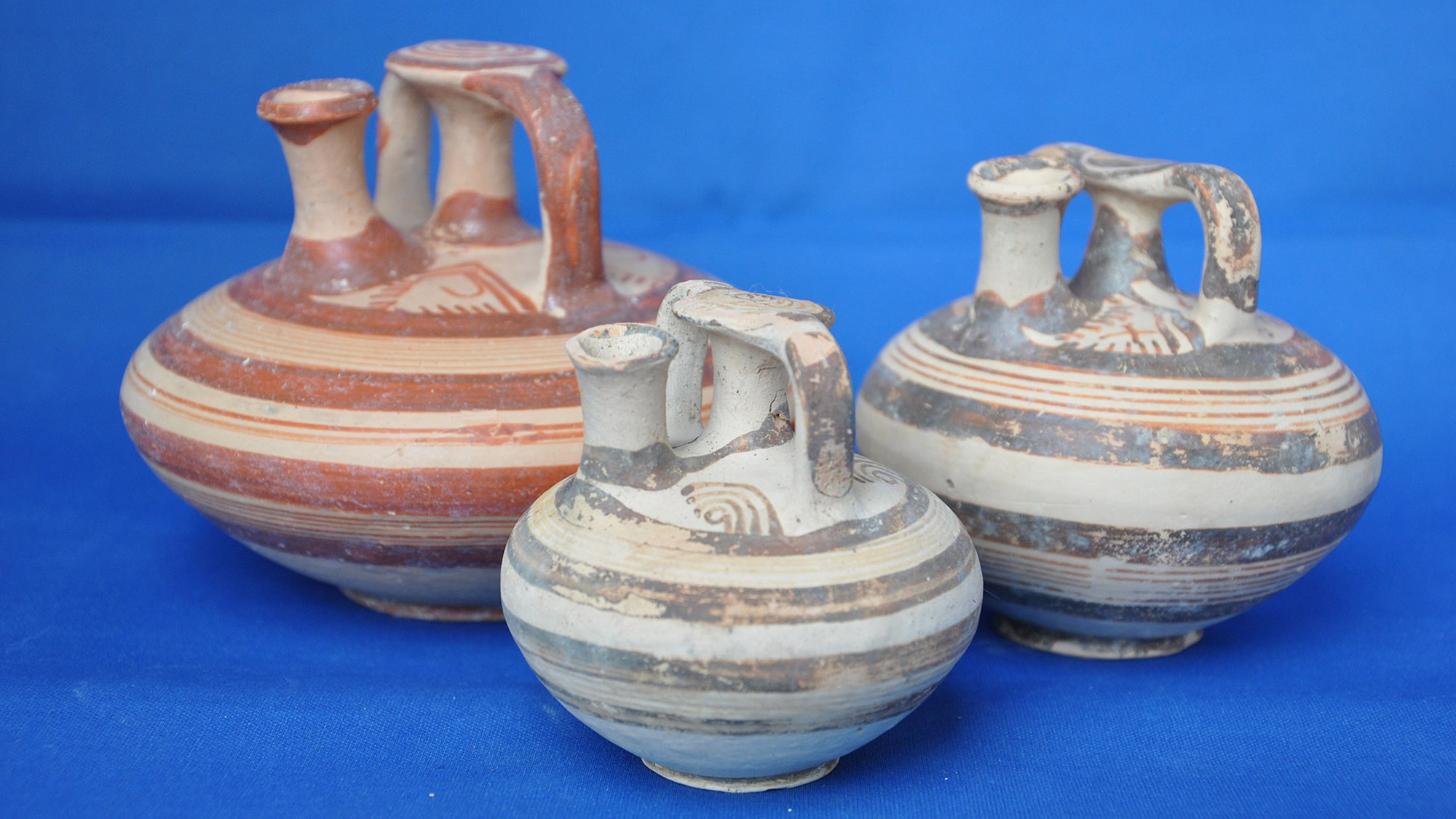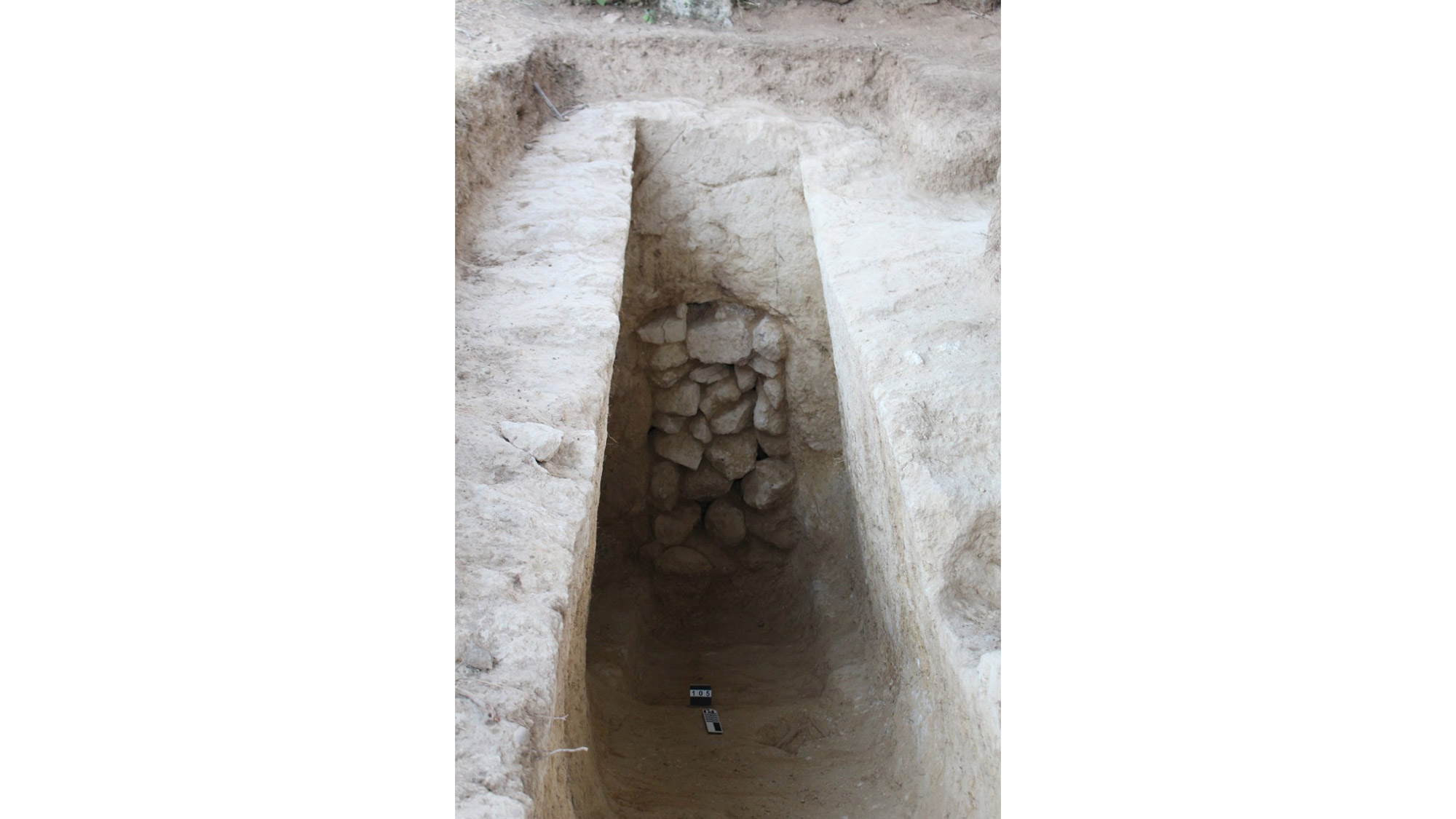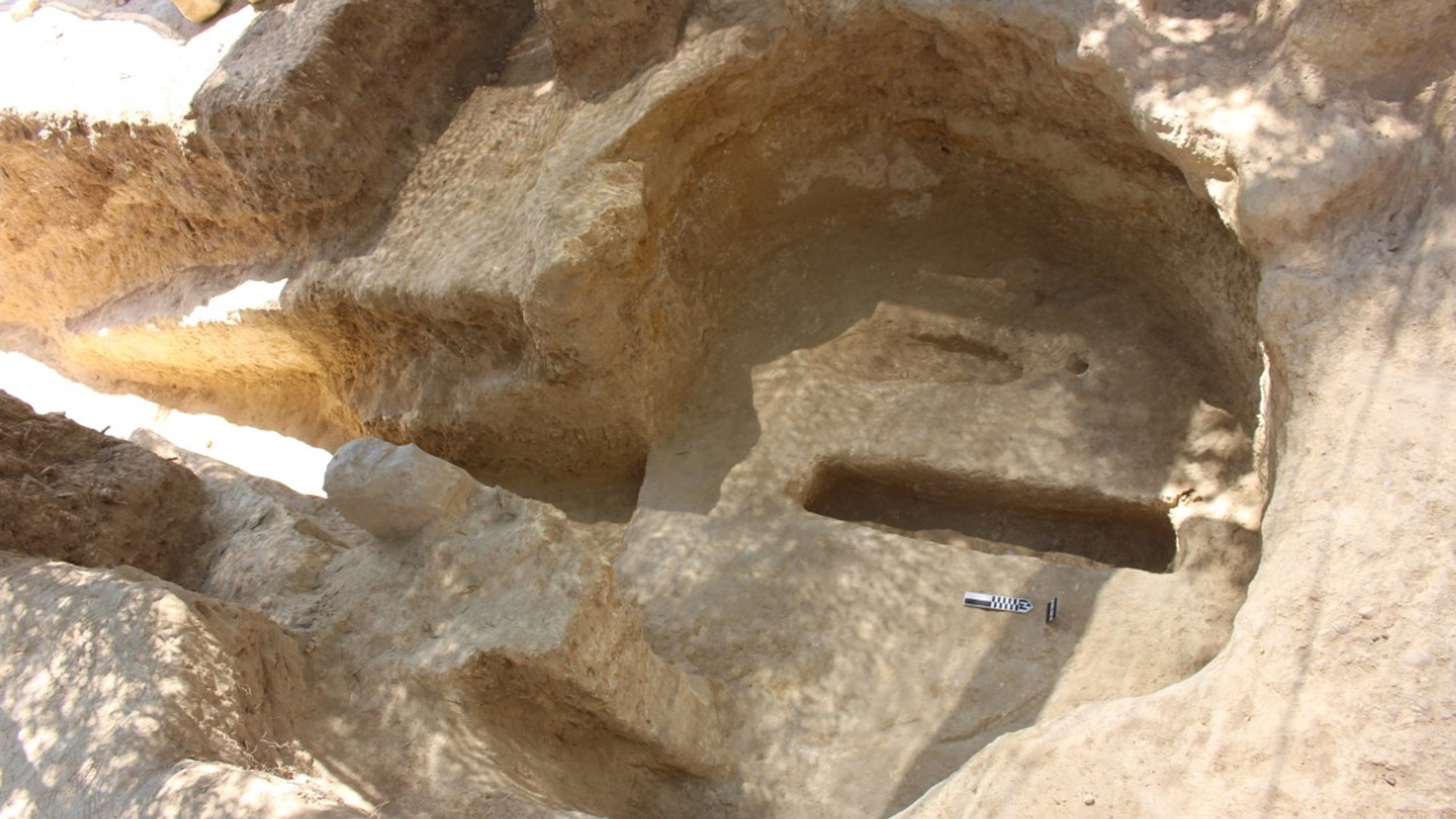Grave Robbers Missed These Ancient Greek Graves, Filled with More than a Dozen Skeletons
Looters had hit many of the nearby burials.

Grave robbers are usually a determined bunch, but for the past 3,400 years, unsavory burglars have managed to miss two ancient burial chambers just outside of Corinth, Greece, according to archaeologists who are now analyzing the tombs' Bronze Age skeletons and artifacts.
The tombs themselves are filled with hundreds of bones; one has two primary burials and the bones of 14 additional people, whose remains were likely moved there from other burials in ancient times, according to the Hellenic Ministry of Culture and Sports. The other tomb's roof was missing — it likely collapsed during the late Mycenaean period (1400 B.C. to 1200 B.C.), or late Bronze Age — but still had three primary burials within it.
Both burial chambers also held ancient treasures, including figurines, clay pots, false amphoras (jugs) and narrow-leaved basins, as well as other small artifacts such as buttons, the Ministry reported yesterday (Aug. 11).
Related: In Photos: Spartan Temple and Cultic Artifacts Discovered
The cemetery itself is located at Aidonia, an archaeological site on Greece's Peloponnese Peninsula that's also famous for a nearby temple of Zeus, located at Nemea. Archaeologists have known about the Aidonia burial ground since the 1970s, when 20 tombs were uncovered. But those graves were heavily looted soon after their discovery. Analyses of the newly discovered, unlooted tombs may help shed light on the Mycenaean civilization, the ministry said.

Pottery

Deep tomb

Two tombs
That said, these newfound tombs are starkly different from the previously excavated burials, which dated to the early Mycenaean period (1600 B.C. to 1400 B.C.). These earlier burials contained ancient riches, including storage vessels, jewelry, weapons and other high-status belongings, the archaeologists said.
Although many of those earlier tombs were looted, the robbers missed one grave from the same period. And it's a good thing they did; the unlooted burial contained ancient jewelry that the authorities linked to another batch of jewelry put on sale at a New York art gallery in 1993, the ministry reported. This illegally taken jewelry was eventually repatriated to Greece.
Sign up for the Live Science daily newsletter now
Get the world’s most fascinating discoveries delivered straight to your inbox.
The Mycenaean civilization flourished from the 17th to the 12th centuries B.C. The new dig is part of an Ephorate of Antiquities of Corinth project involving archaeologists from around the world who are searching for tombs that were overlooked during earlier excavations.
- In Photos: 8 New Shipwrecks Discovered in Greece
- Photos: Ancient Greek Burials Reveal Fear of the Dead
- Photos: The Reconstruction of Teen Who Lived 9,000 Years Ago
Originally published on Live Science.

Laura is the archaeology and Life's Little Mysteries editor at Live Science. She also reports on general science, including paleontology. Her work has appeared in The New York Times, Scholastic, Popular Science and Spectrum, a site on autism research. She has won multiple awards from the Society of Professional Journalists and the Washington Newspaper Publishers Association for her reporting at a weekly newspaper near Seattle. Laura holds a bachelor's degree in English literature and psychology from Washington University in St. Louis and a master's degree in science writing from NYU.









